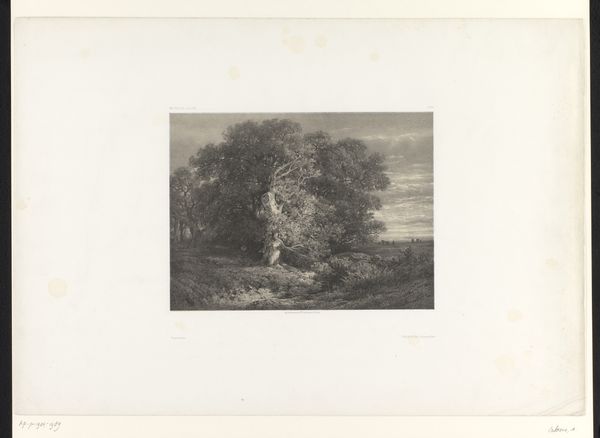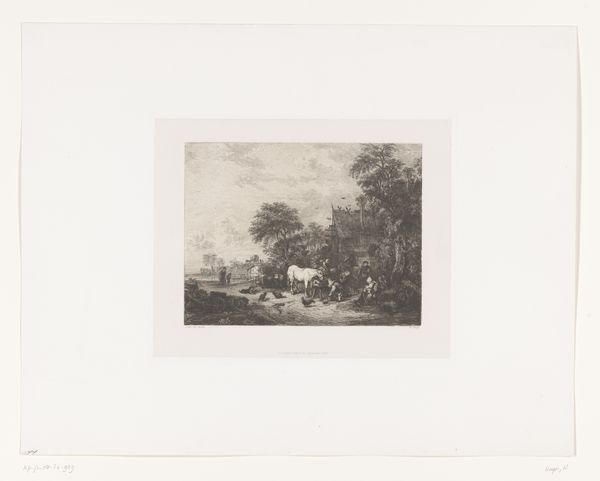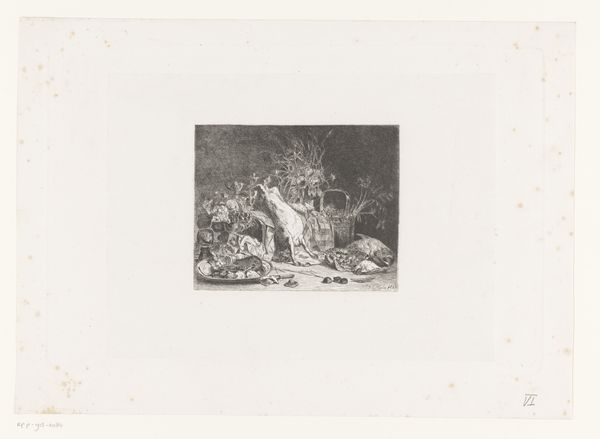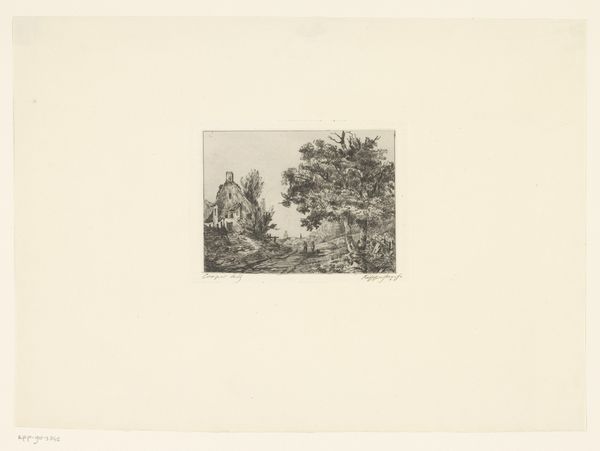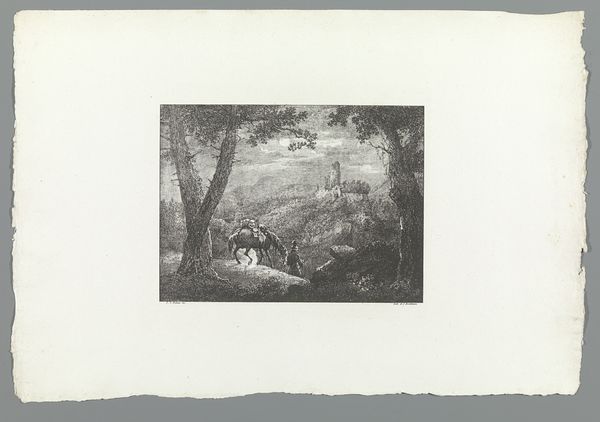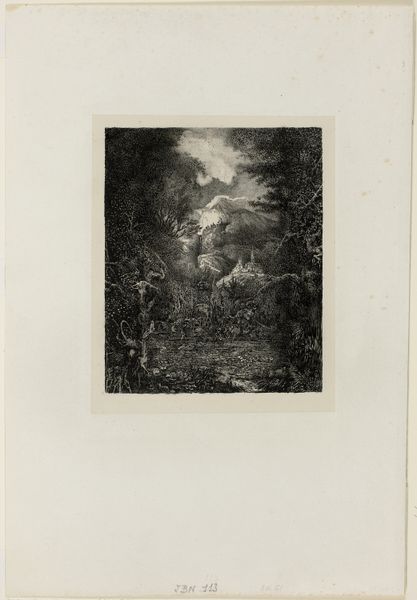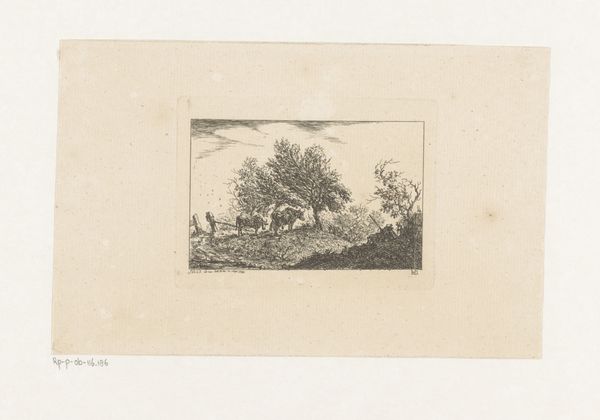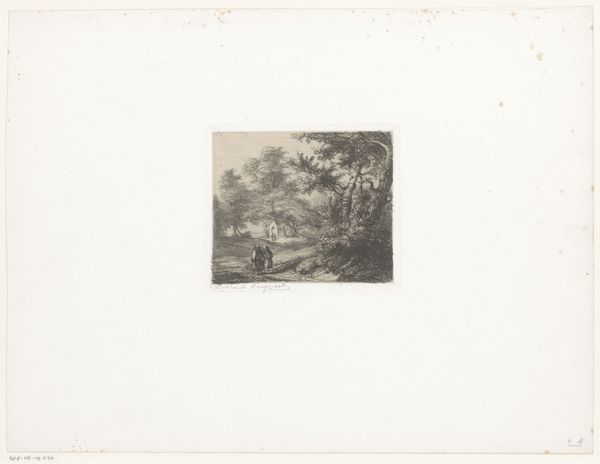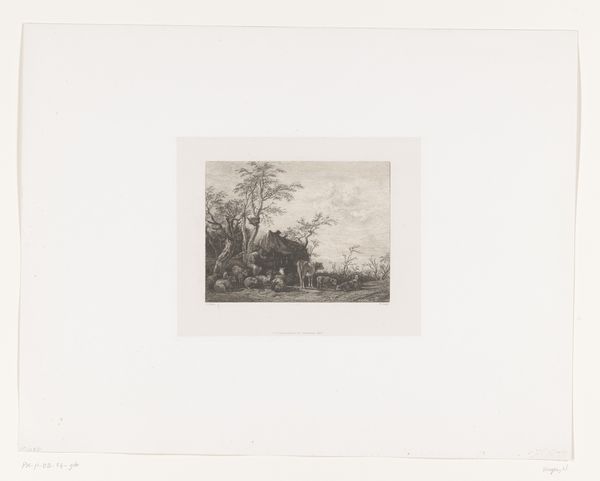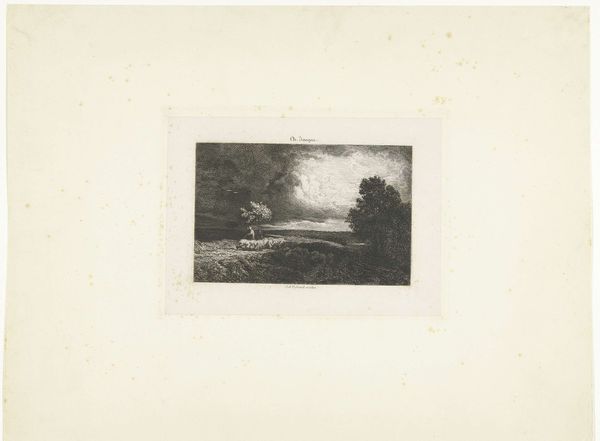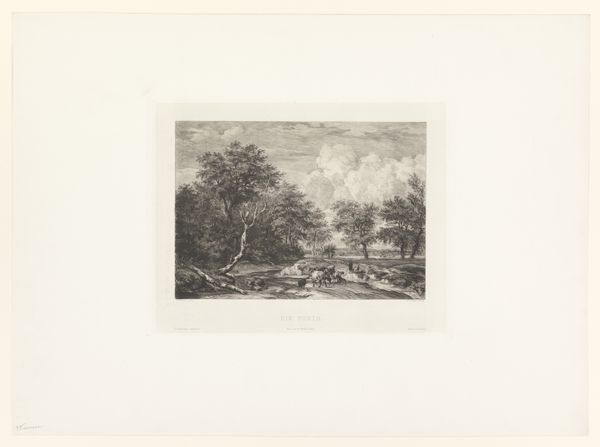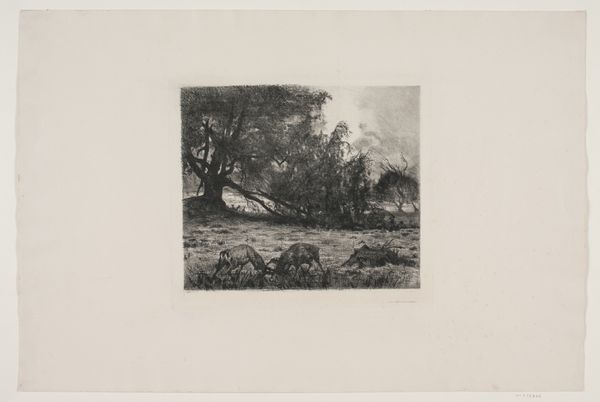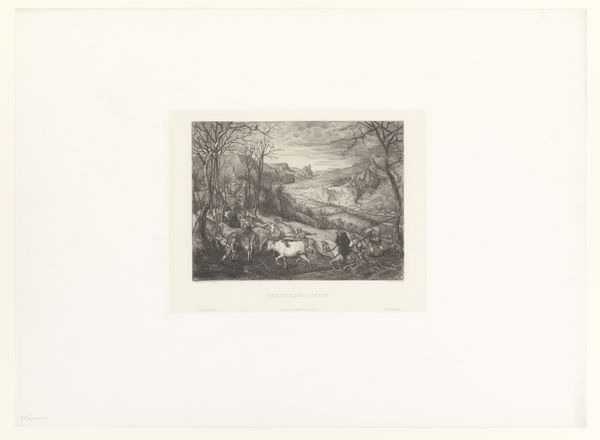
#
white colour balance
#
pencil drawn
#
photo of handprinted image
#
light pencil work
#
pale colours
#
light coloured
#
old engraving style
#
white palette
#
forest
#
tonal art
#
repetition of white colour
Dimensions: height 371 mm, width 518 mm
Copyright: Rijks Museum: Open Domain
Alexandre Calame made this woodland scene with storm clouds using etching. It depicts the sublimity of nature. This etching belongs to the Romanticism art movement, which prioritized emotion over reason and celebrated nature as a powerful and awe-inspiring force. Made in the 19th century, it reflects the cultural context of the time. Switzerland, where Calame lived, had a growing sense of national identity, and the Alps became a symbol of this identity. Calame and other artists contributed to this by creating idealized images of the Swiss landscape that resonated with the public. His art was not only a reflection of nature but also a commentary on the social and political values of his time. As historians, we look at the artist, their influences, and the cultural context in which they worked to understand their art. We use historical documents, letters, and other resources to gain insight into the meaning of their work and its significance to society.
Comments
No comments
Be the first to comment and join the conversation on the ultimate creative platform.
